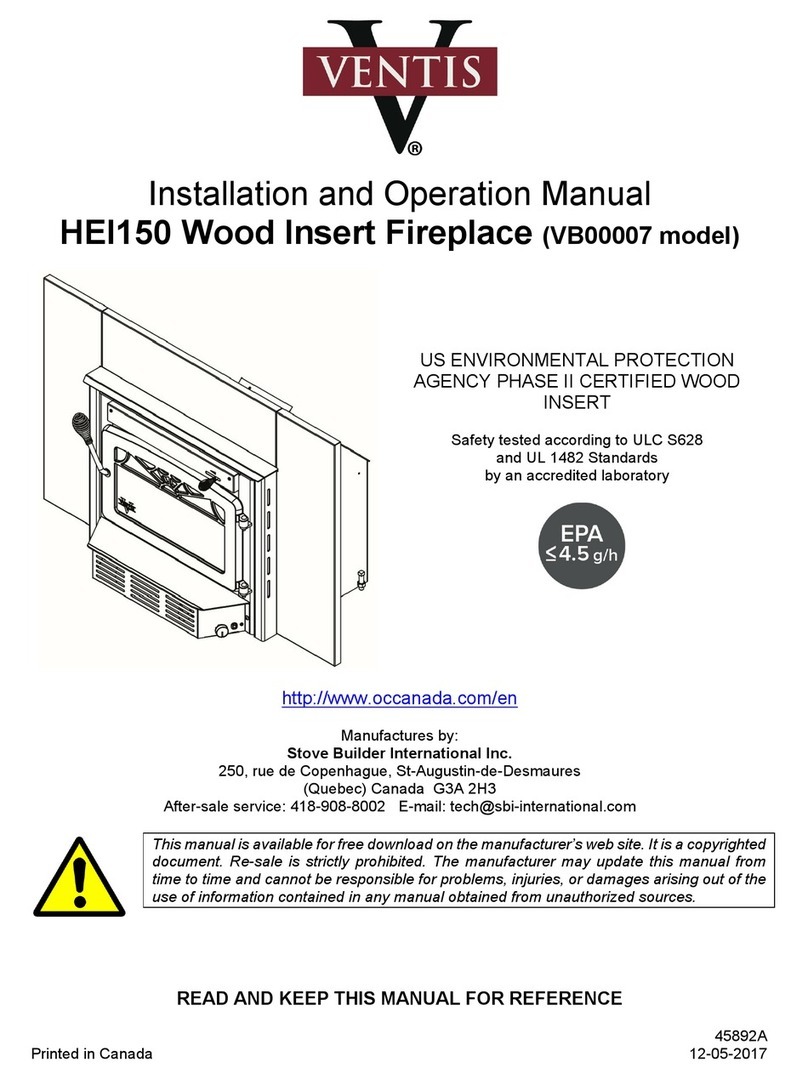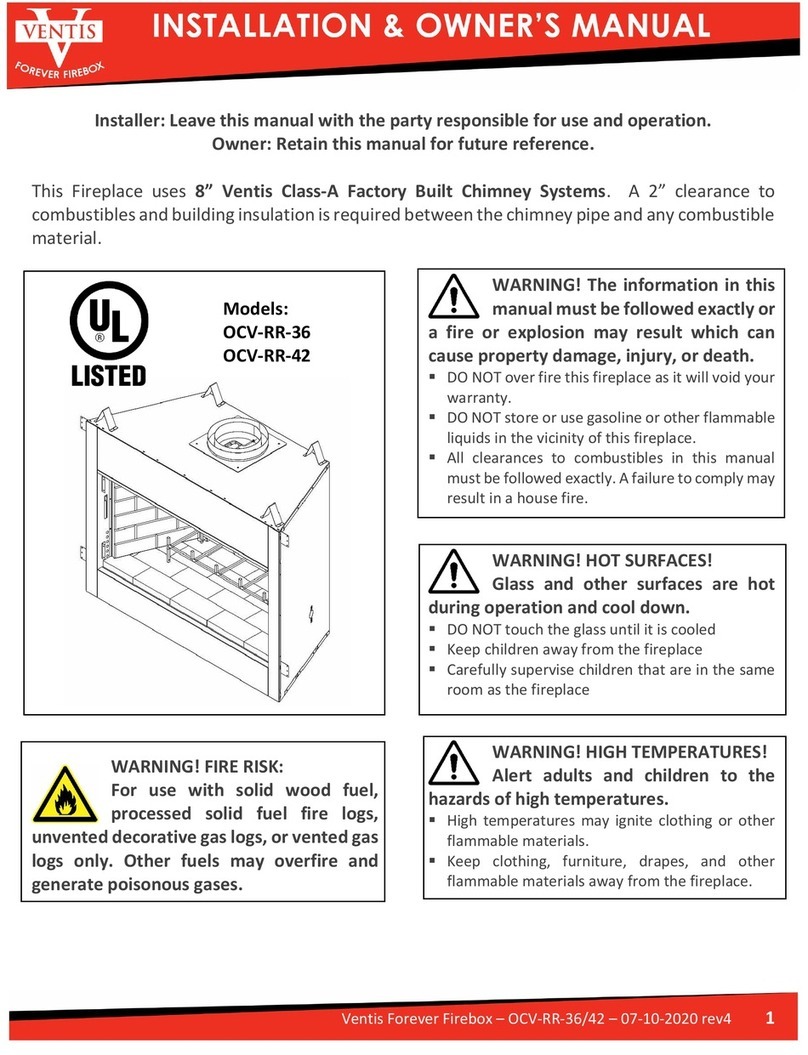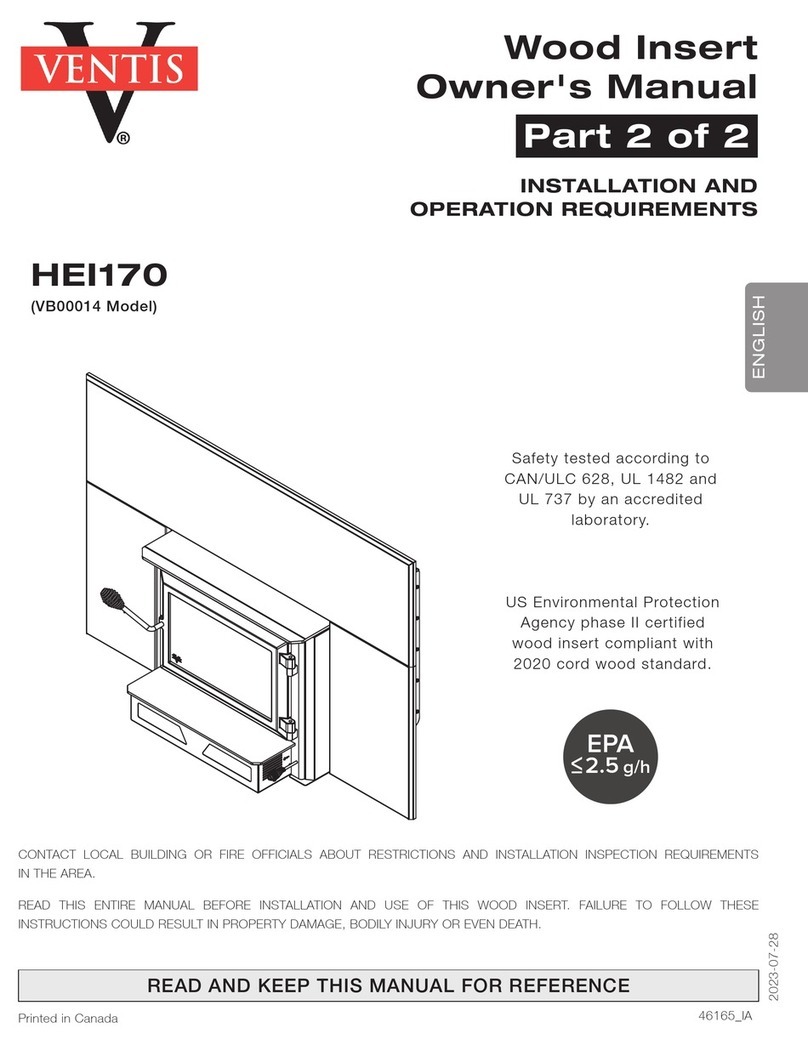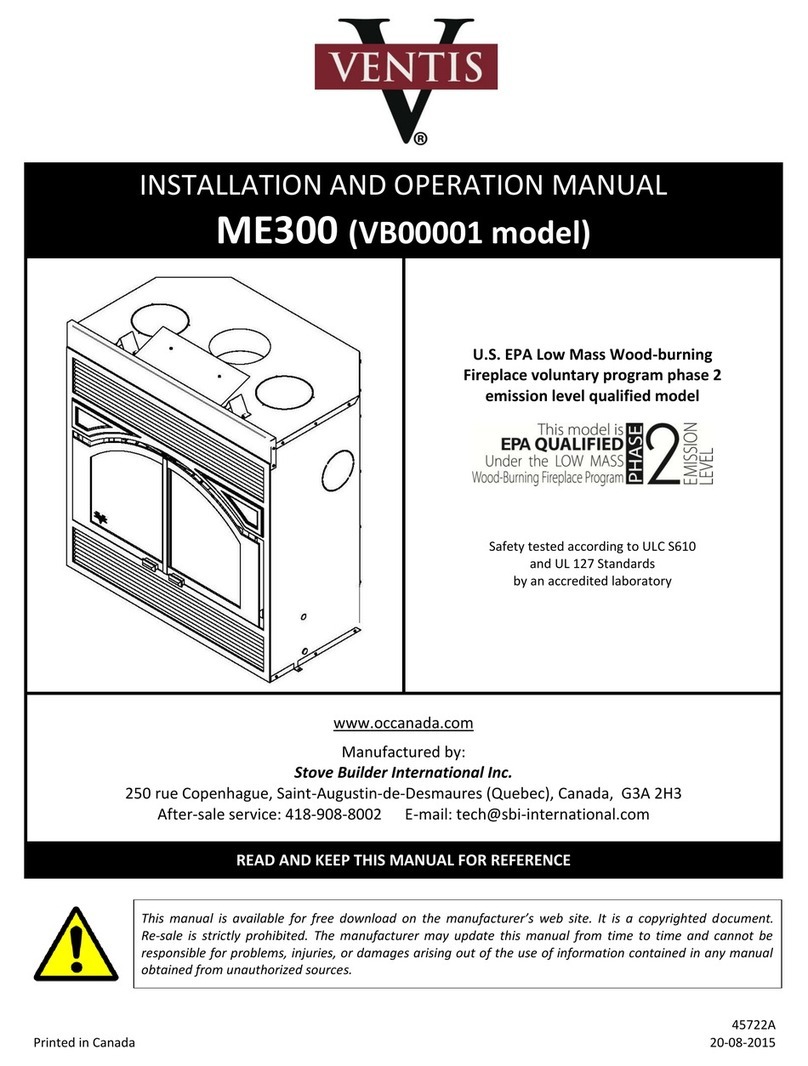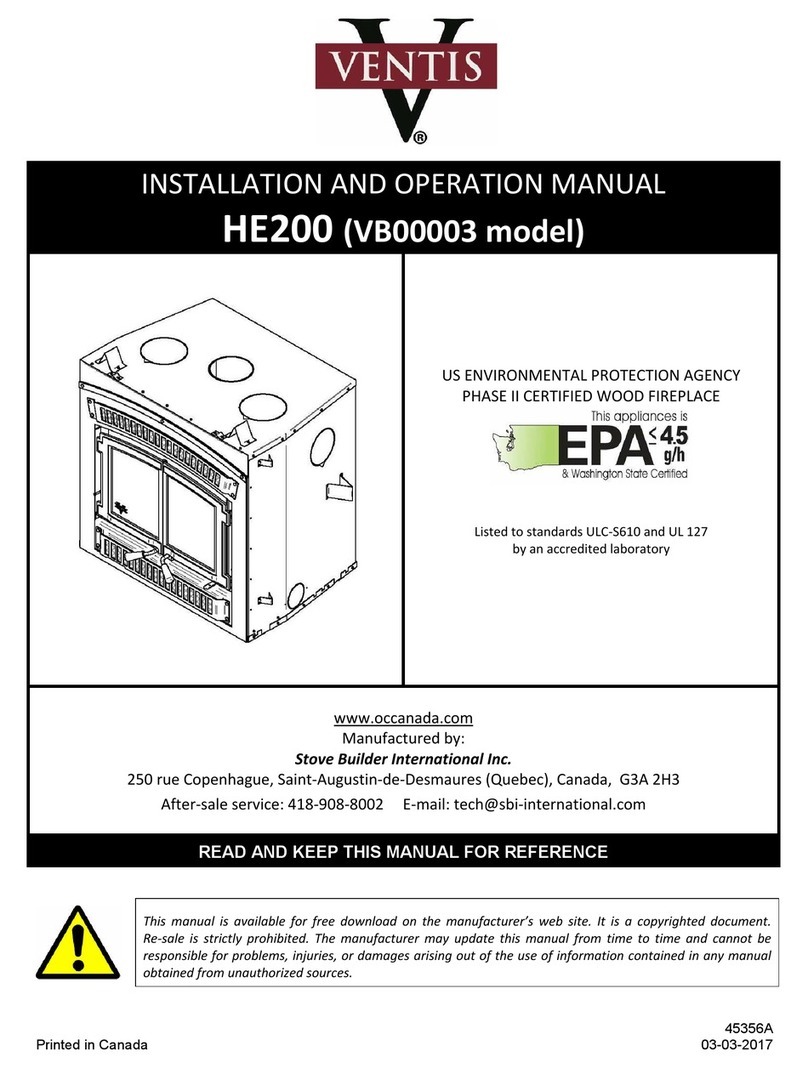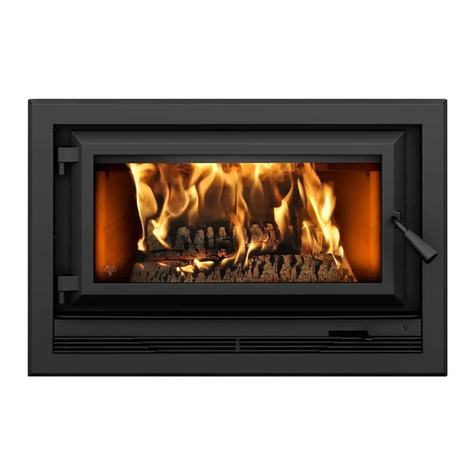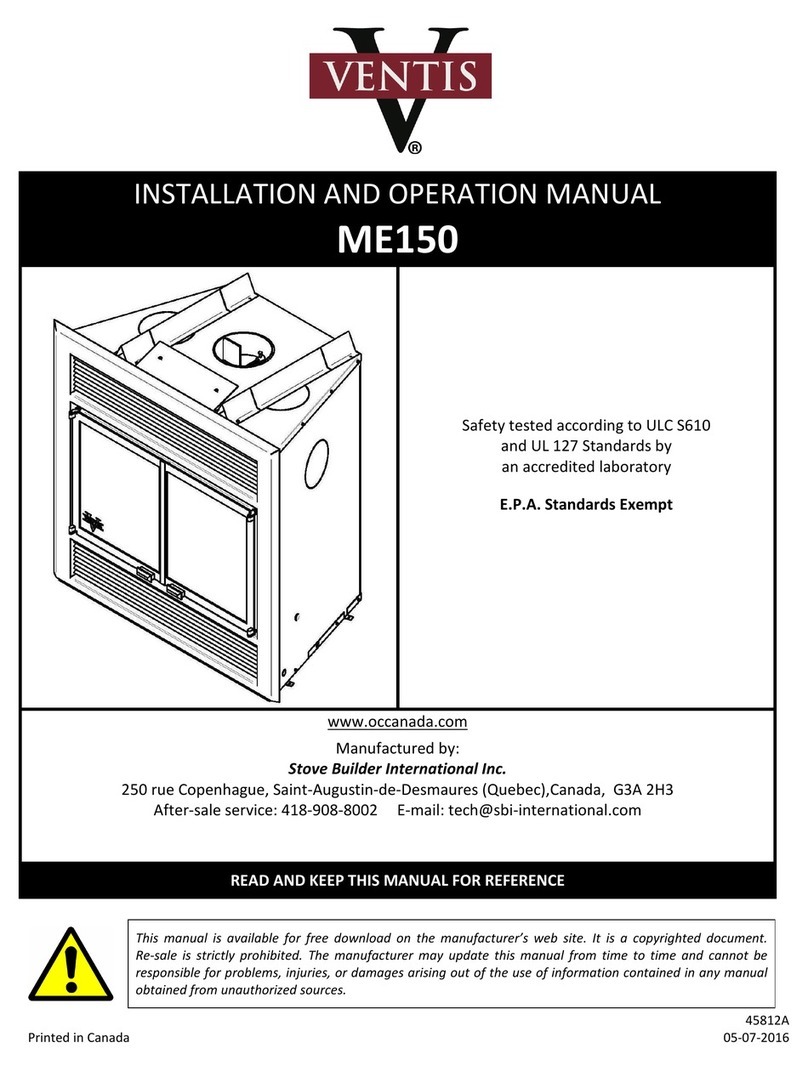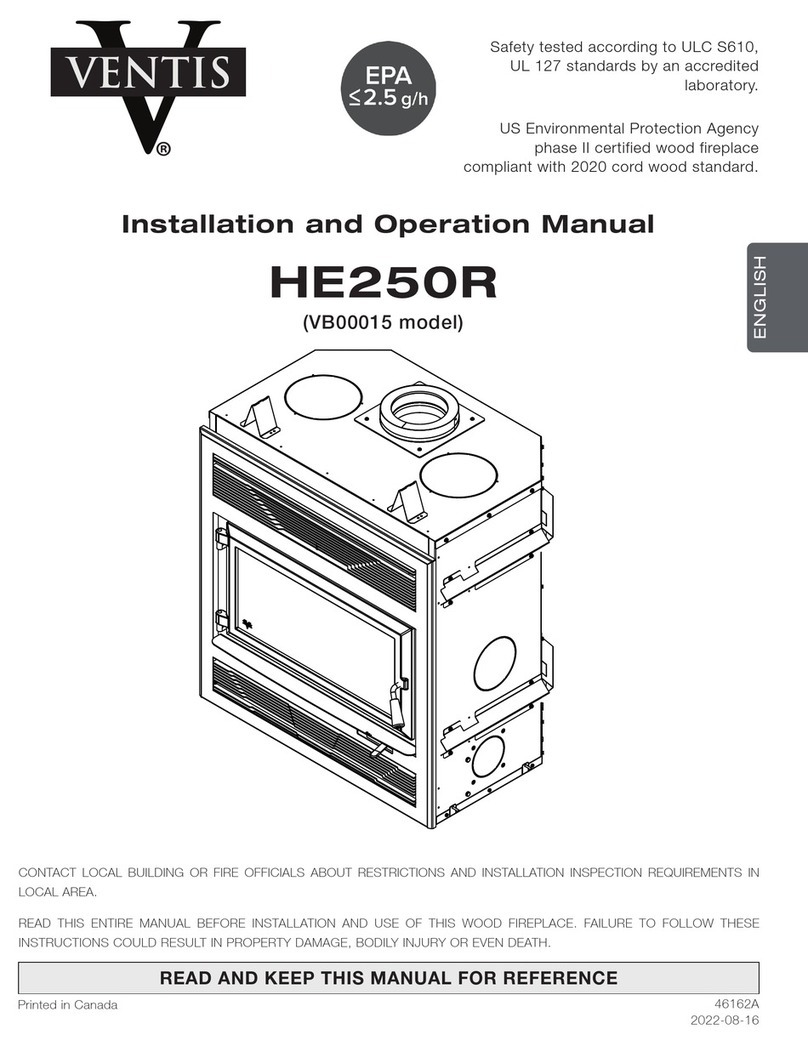
4 HE250 - Installation and Operation Manual
5Maintaining Your Wood Heating System ........................................23
5.1 Fireplace Maintenance..........................................................................................23
5.1.1 Plated Finish Maintenance ................................................................................23
5.1.2 Glass Door Cleaning..........................................................................................23
5.1.3 Door Adjustment................................................................................................24
5.1.4 Door Alignment..................................................................................................24
5.1.5 Replacing the Door Gasket................................................................................26
5.1.6 Cleaning and Painting the Fireplace..................................................................27
5.2 Chimney and Chimney Liner Maintenance ...........................................................27
5.2.1 Why Chimney Cleaning is Necessary................................................................27
5.2.2 How Often Should You Clean the Chimney?.....................................................28
5.2.3 Cleaning the Chimney .......................................................................................28
5.2.4 Fire Baffle Removal Prior to Cleaning the Chimney ..........................................29
5.2.5 Chimney Fire .....................................................................................................29
PART B – INSTALLATION ...................................................................30
6Safety Information ..............................................................................30
6.1 Summary of Installation Cautions and Warnings ..................................................30
6.2 Regulations Covering Fireplace Installation..........................................................31
6.3 Fireplace Installation .............................................................................................32
6.3.1 Locating the HE250 ...........................................................................................32
6.3.2 Minimum Hearth Extension Requirements ........................................................39
6.3.3 Framing, Facing, Mantel, and Combustible Shelf ..............................................40
7Clearances to Combustible Material.................................................46
7.1 Locating the Certification Label.............................................................................46
8The Venting System ............................................................................47
8.1 General .................................................................................................................47
8.2 Suitable Chimney..................................................................................................47
8.3 Minimum Chimney Height.....................................................................................47
8.4 The Relationship Between the Chimney and the House.......................................47
8.4.1 Why the chimney should penetrate the highest heated space...........................47
8.5 Chimney Installation Notes ...................................................................................48
8.6 Chimney Installation Instructions ..........................................................................51
8.6.1 Examples of Typical Chimney Installation .........................................................51
8.6.2 Offset Chimney Installation................................................................................55
8.7 Angled Wall Radiation Shield................................................................................57
8.8 Chimney Support Installation ................................................................................57
8.8.1 Universal Roof Support......................................................................................57
8.8.2 Universal Offset Support....................................................................................57
8.9 Installation Instructions for Masonry Application ...................................................58
